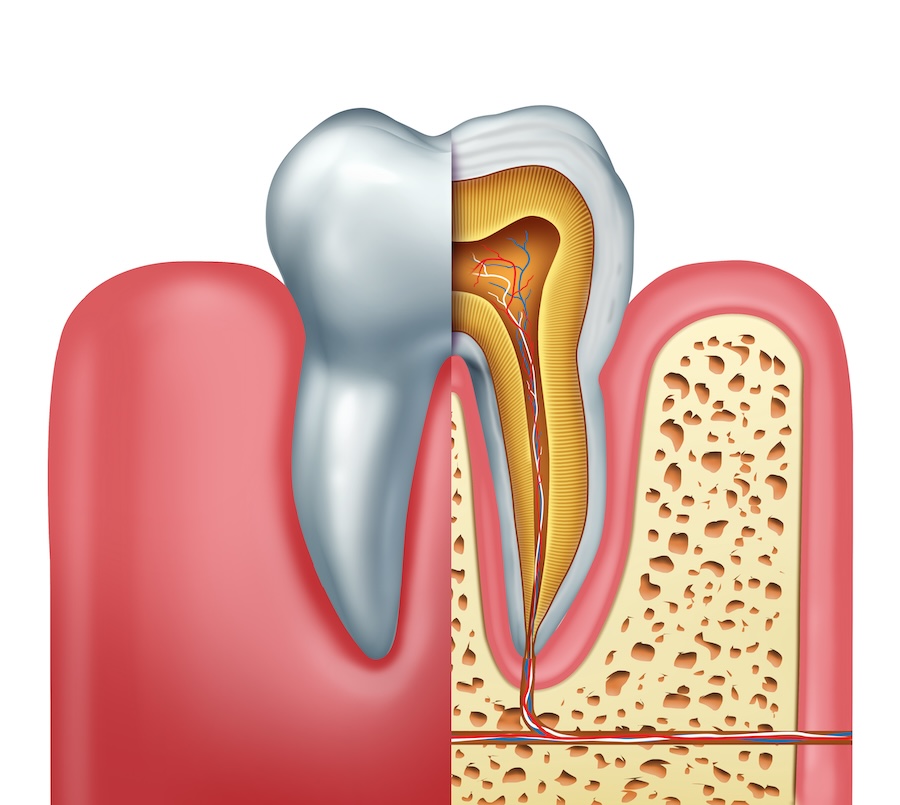The Anatomy of a Tooth: A Closer Look

Ever wondered what’s really going on beneath the surface of your smile? Teeth are more than just hard surfaces for chewing—they’re complex structures made up of several layers, each with its own role in keeping your teeth healthy. At Pleasant Plains Dental in Indian Trail, NC, we believe that understanding the anatomy of a tooth can help you better care for your oral health. Let’s break it down.
1. Enamel: The Protective Outer Layer
The enamel is the hard, outermost layer of your tooth, and it’s also the hardest substance in your entire body. This protective shield is what helps your teeth withstand the wear and tear of daily activities like chewing and biting.
Purpose: Shields the inner layers from bacteria, temperature, and pressure.
Fun Fact: Despite its strength, enamel can wear down from acids in foods, drinks, and plaque, leading to cavities.
2. Dentin: The Sensitive Middle Layer
Beneath the enamel lies the dentin, a porous, yellowish layer that makes up the bulk of the tooth. Dentin contains tiny tubules that lead directly to the tooth’s nerve, which is why worn enamel can cause tooth sensitivity.
Purpose: Provides support for the enamel and carries sensations from the outer tooth inward.
Did You Know? Unlike enamel, dentin is softer and more susceptible to decay if exposed.
3. Pulp: The Nerve Center
At the core of your tooth is the pulp, which contains blood vessels, nerves, and connective tissue. This living tissue helps nourish the tooth, allowing it to grow and repair minor damage when you’re young.
Purpose: Supplies nutrients to the tooth and senses temperature changes or injury.
Signs of Trouble: If the pulp becomes infected, you might experience a toothache or need a root canal.
4. Cementum: The Root’s Anchor
The cementum is a thin, bony layer covering the tooth’s roots. It helps anchor the tooth to the jawbone via tiny fibers called the periodontal ligament.
Purpose: Provides stability by attaching the tooth’s root to the bone.
Watch Out: If the gums recede, cementum can be exposed, increasing your risk for sensitivity and decay around the root.
5. Periodontal Ligament: The Tooth’s Support System
While not technically part of the tooth itself, the periodontal ligament plays a critical role in dental health. This network of fibers connects the tooth to the jawbone, absorbing the shock from chewing and helping to keep your tooth stable in its socket.
Purpose: Supports the tooth and absorbs pressure from daily activities like chewing.
Dental Care Tip: Gum disease can weaken the periodontal ligament, leading to tooth mobility or even loss.
Comprehensive Dentistry at Pleasant Plains Dental in Indian Trail, NC
Understanding tooth anatomy can help you better appreciate the importance of oral care. At Pleasant Plains Dental in Indian Trail, NC, Dr. Henry J. Ernst, Dr. James Clark, Dr. Paul Kim, Dr. Henk Grobbelaar, and Dr. Nikhil Alaigh are here to help you maintain healthy teeth—from enamel to pulp. Schedule an appointment today for a comprehensive exam and learn more about keeping your smile strong!

 Watch Our Practice Video!
Watch Our Practice Video!